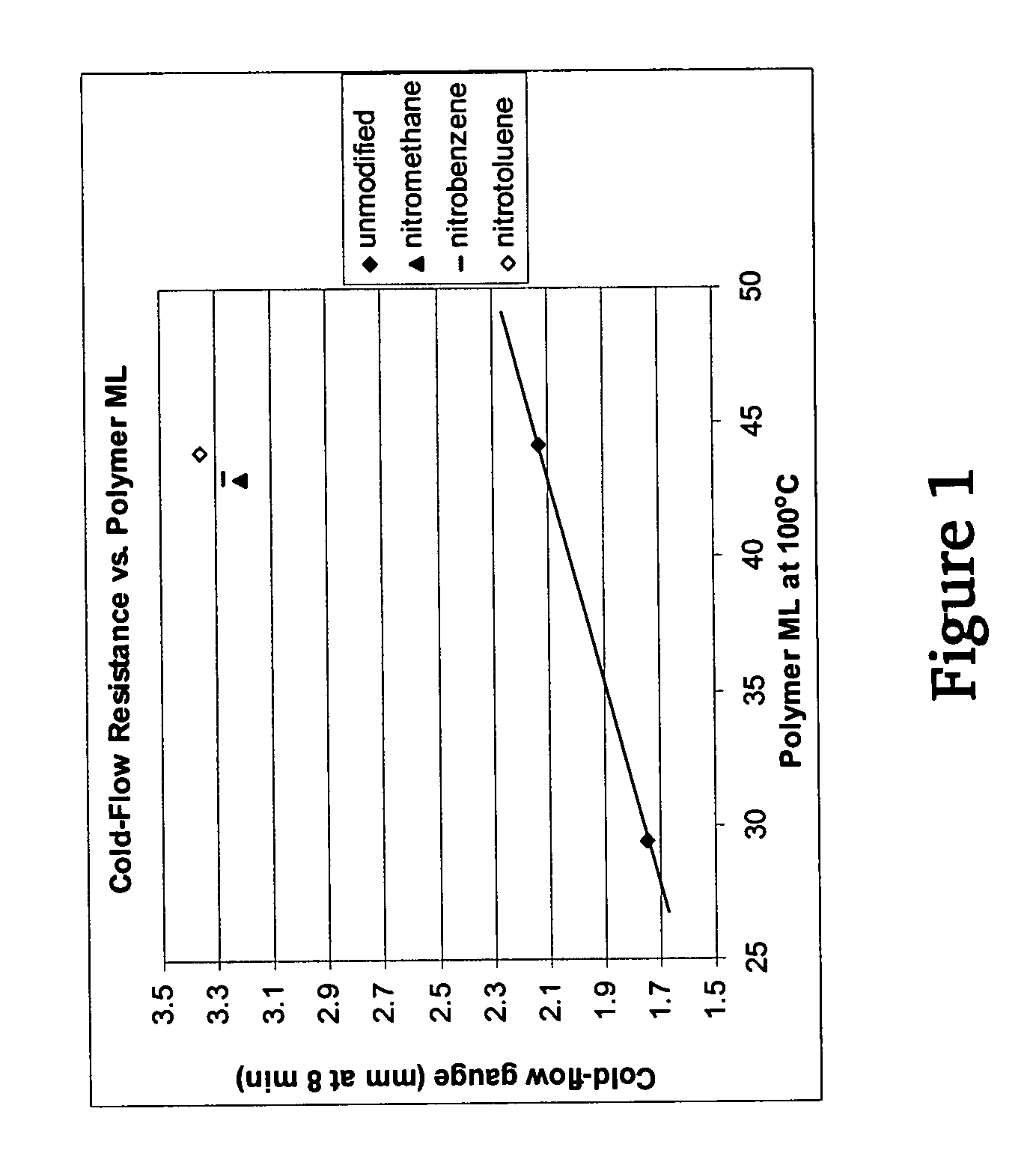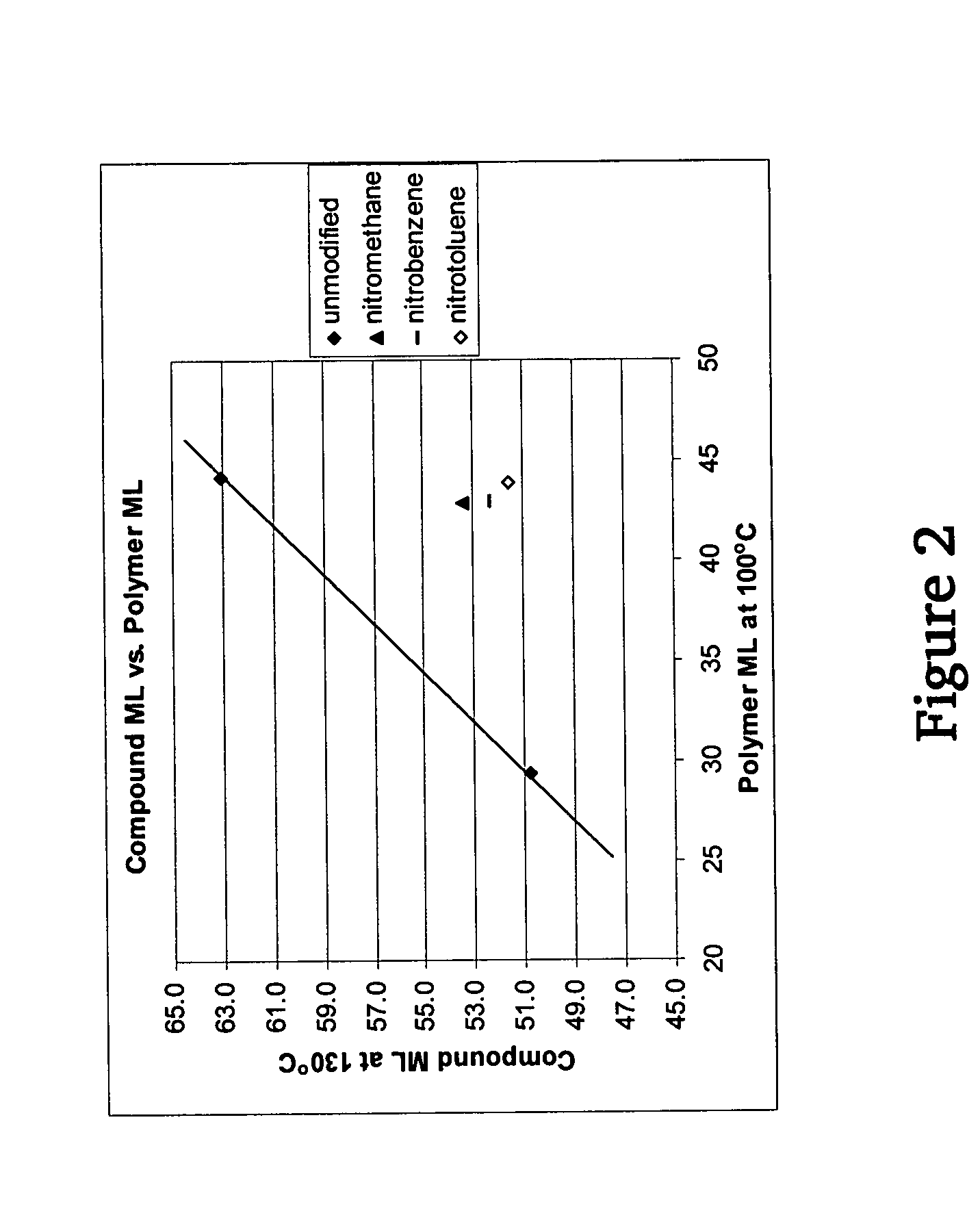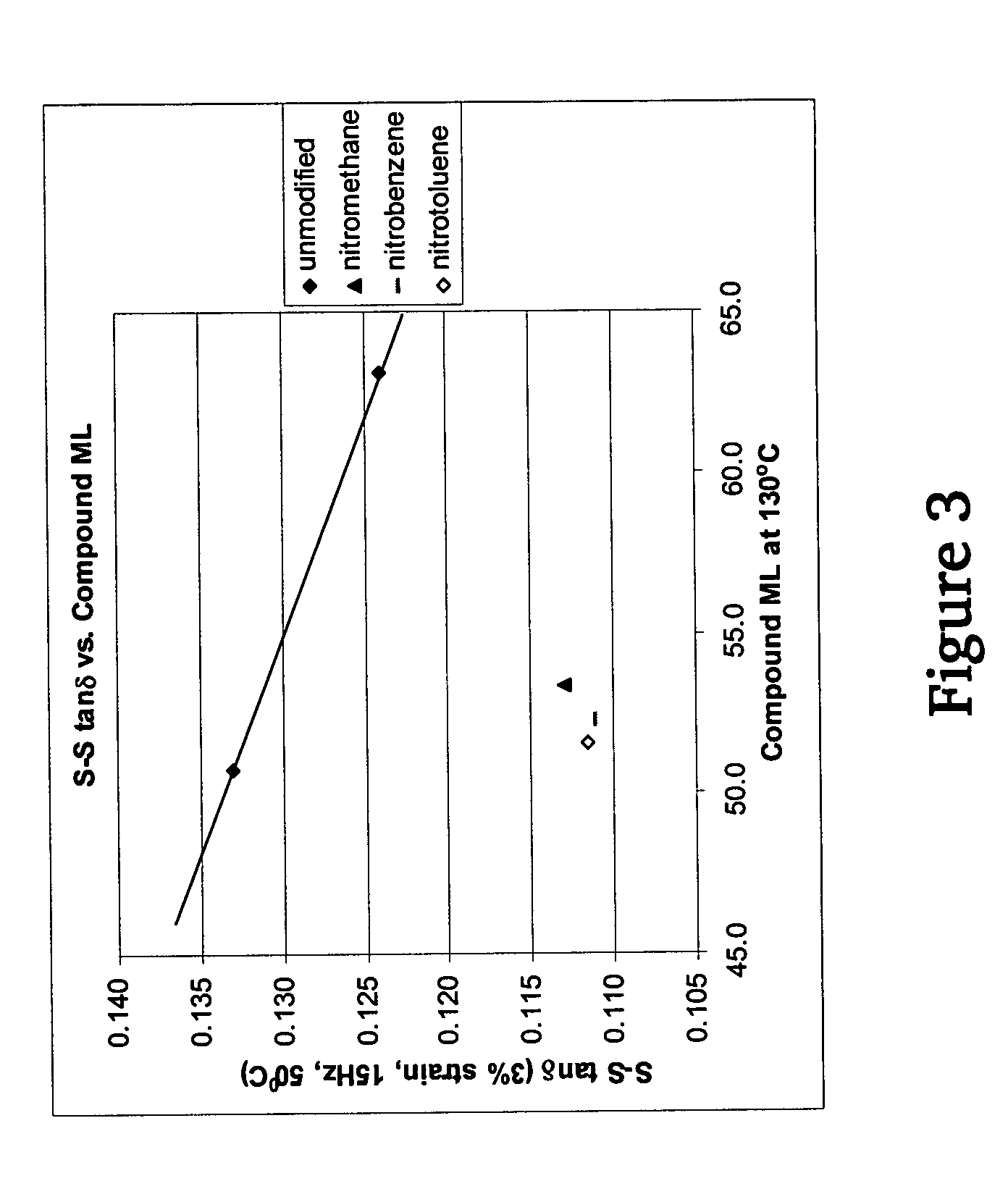Polymers functionalized with nitro compounds
a technology of nitro compounds and polymers, applied in the field of functionalized polymers, can solve the problems of affecting the processability and scorch affecting the safety of rubber compounds, and polymers with relatively high cold flow
- Summary
- Abstract
- Description
- Claims
- Application Information
AI Technical Summary
Benefits of technology
Problems solved by technology
Method used
Image
Examples
example 1
Synthesis of Unmodified cis-1,4-Polybutadiene (Control Polymer)
[0101]To a 2-gallon reactor equipped with turbine agitator blades was added 1403 g of hexane and 3083 g of 20.6 wt % butadiene in hexane. A preformed catalyst was prepared by mixing 7.35 ml of 4.32 M methylaluminoxane in toluene, 1.66 g of 20.6 wt % 1,3-butadiene in hexane, 0.59 ml of 0.537 M neodymium versatate in cyclohexane, 6.67 ml of 1.0 M diisobutylaluminum hydride in hexane, and 1.27 ml of 1.0 M diethylaluminum chloride in hexane. The catalyst was aged for 15 minutes and charged into the reactor. The reactor jacket temperature was then set to 65° C. Fifty three minutes after addition of the catalyst, the polymerization mixture was cooled to room temperature. The resulting polymer cement was coagulated with 12 liters of isopropanol containing 5 g of 2,6-di-tert-butyl-4-methylphenol and then drum-dried. The Mooney viscosity (ML1+4) of the resulting polymer was determined to be 29.4 at 100° C. by using a Monsanto Moo...
example 2
Synthesis of Unmodified cis-1,4-Polybutadiene (Control Polymer)
[0102]To a 2-gallon reactor equipped with turbine agitator blades was added 1651 g of hexane and 2835 g of 22.4 wt % butadiene in hexane. A preformed catalyst was prepared by mixing 5.88 ml of 4.32 M methylaluminoxane in toluene, 1.22 g of 22.4 wt % 1,3-butadiene in hexane, 0.47 ml of 0.537 M neodymium versatate in cyclohexane, 5.33 ml of 1.0 M diisobutylaluminum hydride in hexane, and 1.02 ml of 1.0 M diethylaluminum chloride in hexane. The catalyst was aged for 15 minutes and charged into the reactor. The reactor jacket temperature was then set to 65° C. Seventy minutes after addition of the catalyst, the polymerization mixture was cooled to room temperature. The resulting polymer cement was coagulated with 12 liters of isopropanol containing 5 g of 2,6-di-tert-butyl-4-methylphenol and then drum-dried. The properties of the resulting polymer are summarized in Table 1.
example 3
Synthesis of Nitromethane-Modified cis-1,4-Polybutadiene
[0103]To a 2-gallon reactor equipped with turbine agitator blades was added 1656 g of hexane and 2810 g of 22.6 wt % butadiene in hexane. A preformed catalyst was prepared by mixing 9.55 ml of 4.32 M methylaluminoxane in toluene, 1.97 g of 22.6 wt % 1,3-butadiene in hexane, 0.77 ml of 0.537 M neodymium versatate in cyclohexane, 8.67 ml of 1.0 M diisobutylaluminum hydride in hexane, and 1.65 ml of 1.0 M diethylaluminum chloride in hexane. The catalyst was aged for 15 minutes and charged into the reactor. The reactor jacket temperature was then set to 65° C. Fifty six minutes after addition of the catalyst, the polymerization mixture was cooled to room temperature. 435 g of the resulting unmodified polymer cement was transferred from the reactor to a nitrogen-purged bottle, followed by addition of 5.86 ml of 0.405 M nitromethane (CH3NO2) in toluene. The bottle was tumbled for 20 minutes in a water bath maintained at 65° C. The re...
PUM
| Property | Measurement | Unit |
|---|---|---|
| Temperature | aaaaa | aaaaa |
| Temperature | aaaaa | aaaaa |
| Temperature | aaaaa | aaaaa |
Abstract
Description
Claims
Application Information
 Login to View More
Login to View More - R&D
- Intellectual Property
- Life Sciences
- Materials
- Tech Scout
- Unparalleled Data Quality
- Higher Quality Content
- 60% Fewer Hallucinations
Browse by: Latest US Patents, China's latest patents, Technical Efficacy Thesaurus, Application Domain, Technology Topic, Popular Technical Reports.
© 2025 PatSnap. All rights reserved.Legal|Privacy policy|Modern Slavery Act Transparency Statement|Sitemap|About US| Contact US: help@patsnap.com



